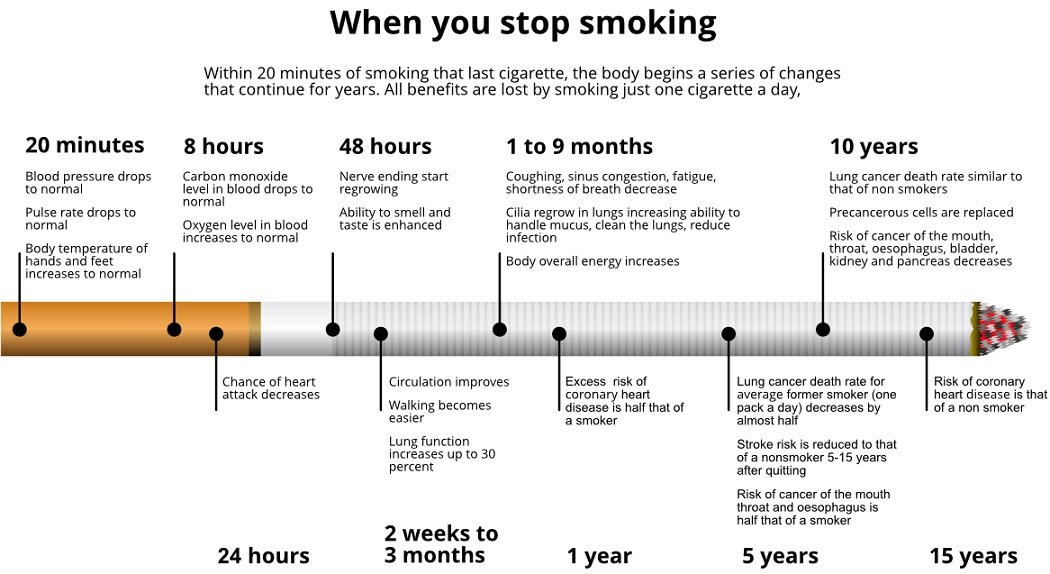Introduction
Chronic bronchitis
Fibrosis
Emphysema
Lung cancer
Asthma
Introduction
The chemicals contained in tobacco cigarette smoke (several thousand types) do damage to the cilia that line the respiratory tract and move dirt particles away from the lungs e.g. pollutants, pathogens, dust. These protrusions from the lungs, trachea and nose are sensitive to toxins and following long periods of sustained damage can cease to function. Cilia damage results in a failure to remove lung mucus and thicker mucus building up in the lungs. This causes an unproductive cough.

Short-term, smoking decreases circulatory and lung function, which returns back to previous levels shortly after stopping smoking. Many other effects are long-term.
Chronic Bronchitis
The buildup of debris in the respiratory tract renders someone more prone to bacterial infection such as chronic bronchitis. This manifests itself through inflammation of the airways and constitutes a kind of chronic obstructive pulmonary disease (COPD). Symptoms include coughing, increased mucus production, shortness of breath and wheezing. Chronic, as opposed to acute bronchitis lasts for more than 3 months.
Fibrosis
Fibrosis is the accumulation of scar tissue as a result of damage or bacterial infection. It affects the aveoli primarily, as they are ever so small and fragile. So fibrosis is not a disease in its own right, but a result of others.
Scar tissue is fibrous connective tissue and prevents good lung function, therefore symptoms caused are coughing and shortness of breath. Damaged alveoli will not contribute
